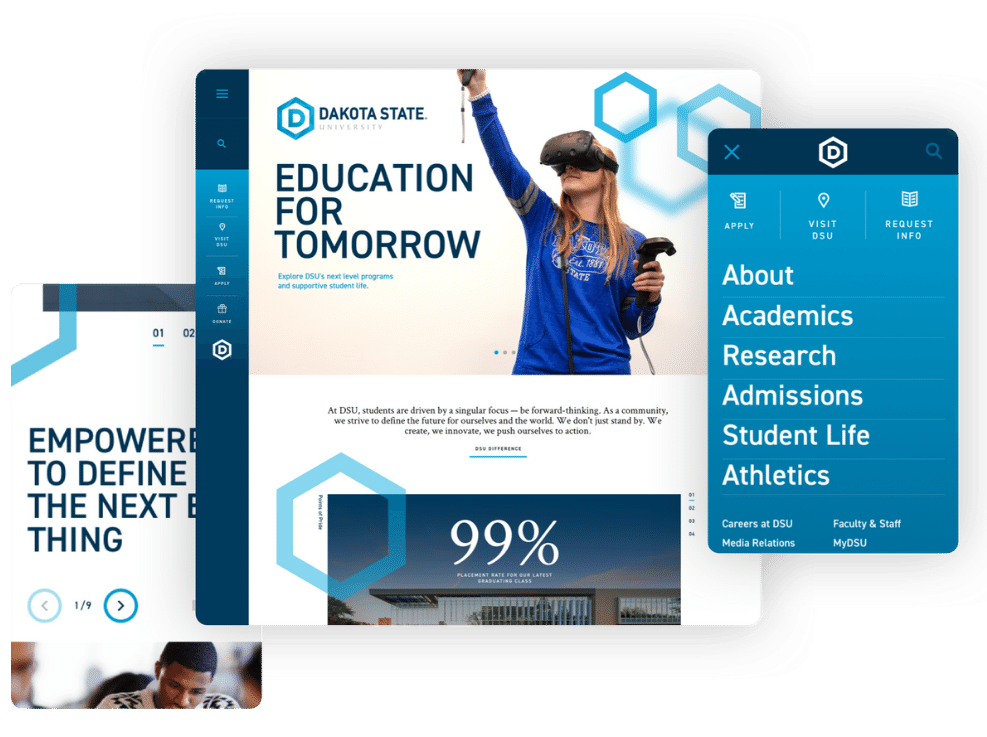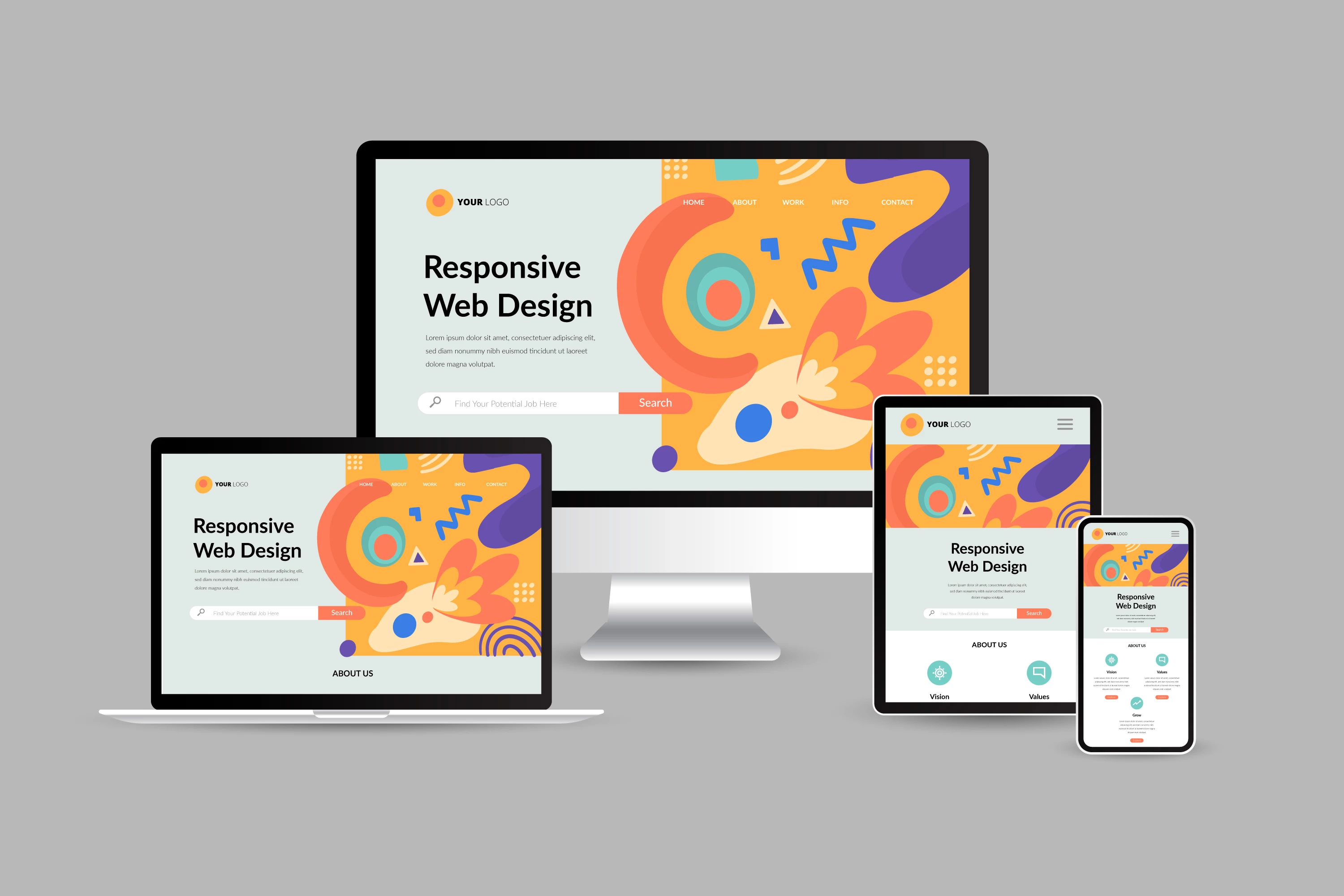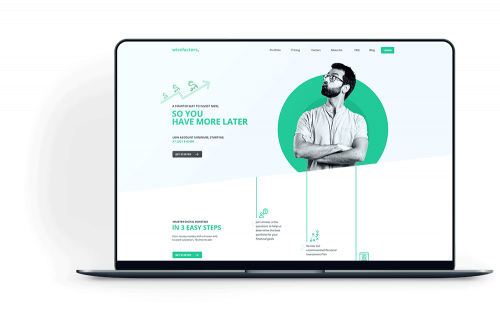The Power of User-Centered Website Layout in Growing Your Online Target Market
In a progressively competitive digital landscape, the value of user-centered web site design can not be overemphasized. By focusing on the needs and habits of users, organizations can develop websites that not just bring in however likewise engage a varied audience. Efficient design principles-- such as user-friendly navigation and ease of access-- are necessary in promoting customer contentment and loyalty. However, recognizing just how to take advantage of these concepts effectively elevates vital inquiries concerning implementation and influence. What approaches can organizations take on to ensure their styles resonate with individuals and eventually drive development?

Recognizing User-Centered Style
User-Centered Layout (UCD) is an essential method to website advancement that prioritizes the demands, preferences, and habits of end individuals throughout the layout procedure. This technique stresses comprehending users deeply-- with research study methods such as interviews, surveys, and functionality testing-- to develop an internet site that reverberates with them. By integrating customer feedback at every phase, developers can guarantee that the end product lines up carefully with individual expectations.
UCD advertises repetitive design, where models are tested and fine-tuned based on individual communications and experiences. This cycle not just improves use but likewise promotes a sense of possession amongst individuals, as they feel their input is valued and impactful. In addition, UCD assists recognize potential obstacles and discomfort points in the customer journey, enabling developers to attend to these obstacles proactively.
Ultimately, accepting UCD causes websites that are a lot more intuitive, interesting, and reliable. By putting users at the center of the design procedure, organizations can produce digital experiences that not just attract however also maintain their target audience, driving better fulfillment and commitment. In a competitive on-line landscape, this method is vital for attaining sustained success.
Key Concepts of Customer Experience
A successful customer experience (UX) hinges on several key principles that assist the style procedure and improve interaction between users and the website. Most importantly, usability is extremely important; the site must be intuitive, allowing individuals to browse conveniently and locate information rapidly. This includes clear labeling and a logical structure that lessens cognitive load.
Second of all, ease of access plays an essential duty in guaranteeing that all individuals, despite their capacities or impairments, can efficiently involve with the website. Incorporating alt message for photos, key-board navigation, and screen viewers compatibility promotes inclusivity.
Uniformity is an additional vital concept. A cohesive style language, from color plans to typography, helps users develop experience and trust fund with the site (Website Design). It also enhances brand identity
Furthermore, responses devices are essential. Users ought to obtain clear and immediate reactions to their activities, whether via visual signs or confirmation messages, which improves their self-confidence in browsing the site.
Finally, mobile responsiveness can not be overlooked. With an increasing variety of customers accessing web sites through mobile tools, a layout that adjusts perfectly to different display dimensions is essential for keeping a positive user experience.

Benefits for Online Interaction
Efficient online interaction provides various advantages that can dramatically enhance an internet site's total efficiency - Website Design. By promoting meaningful communications in between users and the click now site, organizations can cultivate a loyal target market that returns with regularity. Involved individuals are most likely to share material, thereby enhancing organic reach and attracting brand-new visitors with word-of-mouth promo
Boosted online engagement additionally results in enhanced individual satisfaction. When individuals find a website that reverberates with their demands, they are much more likely you could try here to explore its offerings completely, which can cause greater conversion rates. Furthermore, interesting content motivates users to invest more time on the site, decreasing bounce prices and favorably influencing online search engine ranking algorithms.
Moreover, reliable interaction supplies very useful understandings into customer choices and actions (Website Design). By evaluating individual interactions, organizations can customize their material and layout methods to meet the evolving expectations of their target market. This adaptive technique not only boosts engagement but additionally strengthens the brand name's track record as receptive and user-centric
Eventually, focusing on on the internet interaction via user-centered style creates a successful environment where both the audience and the company benefit, bring about sustained development and success in the electronic landscape.

Methods for Effective Design
To make best use of the benefits of online interaction, utilizing details techniques in website design is extremely important. Instinctive navigation is necessary; users ought to easily find info without confusion. A well-structured food selection, clear tags, and a rational power structure enhance the customer experience and reduce bounce prices.
2nd, responsive style is crucial in today's multi-device atmosphere. Guaranteeing that a web site adjusts flawlessly to numerous screen dimensions promotes availability, thereby suiting a more comprehensive target market. This versatility not only improves customer contentment however also favorably impacts search engine rankings.
Third, the use of aesthetic pecking order overviews individuals' attention to vital aspects, such as phone call to action (CTAs) Using contrasting colors, differing font sizes, and calculated spacing can properly direct customers towards desired actions, assisting in better communication.
In addition, implementing regular branding across all web pages develops trust fund and acknowledgment. A cohesive color typography, images, and plan strengthen brand name identification and develop an expert appearance.
Finally, enhancing loading speeds is necessary. Users are much less likely to engage with a slow-loading site, making efficiency optimization a critical element of effective layout. By integrating these techniques, web site creators can boost individual experience and ultimately grow their online target market.
Real-World Success Stories
Success tales in user-centered site design highlight the concrete advantages of focusing on customer experience. As an outcome, they experienced a 250% increase in on the internet donations, showing exactly how an user-friendly layout can drive user engagement and assistance.
Another engaging case is that of Airbnb, which made use of user-centered layout concepts to improve their reservation process. By simplifying the individual trip and integrating individualized recommendations, they considerably decreased site abandonment rates. This focus on user experience added to a revenue growth of over 70% in a solitary year, emphasizing the relationship in between well-designed interfaces and financial success.
Furthermore, the ecommerce giant, ASOS, executed user screening to improve their mobile app. By resolving user pain factors, they attained a remarkable 30% boost in mobile sales. These instances highlight that purchasing user-centered design not only enhances individual satisfaction however additionally drives substantial business results, reinforcing the vital duty of individual experience in attaining on-line development.
Conclusion
In final thought, user-centered website layout offers as an essential method for enhancing online target market interaction. By prioritizing user demands and preferences, organizations can produce instinctive and available digital experiences that foster commitment and drive conversions. The combination of customer comments throughout the design procedure not only reduces bounce rates however also encourages exploration. Eventually, taking on efficient user-centered layout principles can substantially contribute to an organization's success in a competitive electronic landscape.
User-Centered Style (UCD) is a fundamental technique to web site advancement that focuses on the requirements, preferences, and actions of end individuals throughout the design process. By including customer comments at every stage, developers can guarantee that the final product straightens carefully with user assumptions.
An effective individual experience (UX) hinges on numerous vital concepts that lead the style process and improve interaction in between individuals and the internet site.Success stories in user-centered internet site style highlight the tangible advantages of prioritizing user experience. These instances look at this now highlight that investing in user-centered style not only enhances individual contentment yet additionally drives substantial organization outcomes, enhancing the essential duty of individual experience in attaining on-line development.